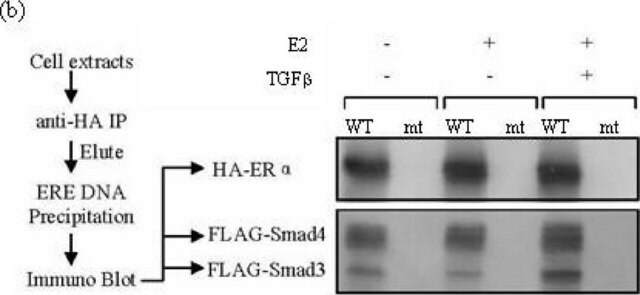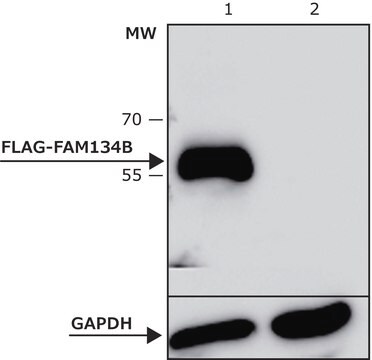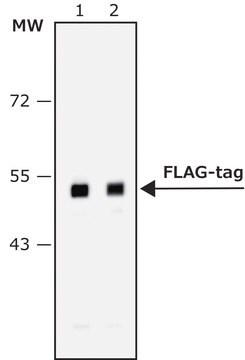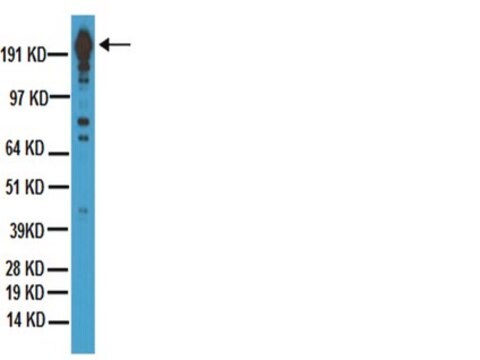F2555
Rabbit Monoclonal ANTI-FLAG® Clone SIGI-25
clone SIG1-25, ascites fluid
Sinónimos:
Anti-ddddk, Anti-dykddddk
About This Item
Productos recomendados
biological source
rabbit
Quality Level
conjugate
unconjugated
antibody form
ascites fluid
antibody product type
primary antibodies
clone
SIG1-25, monoclonal
technique(s)
immunocytochemistry: 1:125-1:250 using transiently transfected cells expressing FLAG (sequence at the N-terminus)-tagged protein fixed with paraformaldehyde/Triton™ X-100
indirect ELISA: suitable
western blot: 1:250-1:500 using extracts of transiently transfected cells expressing FLAG (sequence at the N-terminus)-tagged protein
isotype
IgG
immunogen sequence
DYKDDDDK
shipped in
dry ice
storage temp.
−20°C
General description
Specificity
Immunogen
Application
- immunofluorescence
- western blot analysis
- immunocytochemistry
- indirect ELISA
Learn more product details in our FLAG® application portal.
Physical form
Legal Information
¿No encuentra el producto adecuado?
Pruebe nuestro Herramienta de selección de productos.
Storage Class
10 - Combustible liquids
wgk_germany
WGK 3
flash_point_f
Not applicable
flash_point_c
Not applicable
ppe
Eyeshields, Gloves, multi-purpose combination respirator cartridge (US)
Elija entre una de las versiones más recientes:
¿Ya tiene este producto?
Encuentre la documentación para los productos que ha comprado recientemente en la Biblioteca de documentos.
Contenido relacionado
Protein and nucleic acid interaction reagents and resources for investing protein-RNA, protein-DNA, and protein-protein interactions and associated applications.
Nuestro equipo de científicos tiene experiencia en todas las áreas de investigación: Ciencias de la vida, Ciencia de los materiales, Síntesis química, Cromatografía, Analítica y muchas otras.
Póngase en contacto con el Servicio técnico








